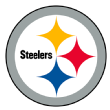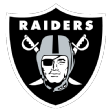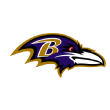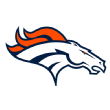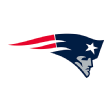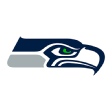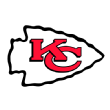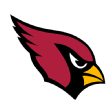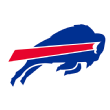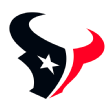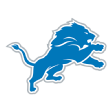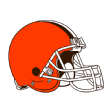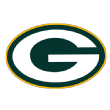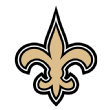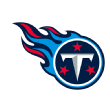Ranking NFL trades that most impacted the 2019 season: 30 deals, from worst to best

Trades were some of the biggest stories in the NFL over the past year, but the deals that got the greatest attention mostly ended up being disappointing. Nobody could have expected Odell Beckham Jr. and Antonio Brown to get traded within a matter of daysin March. Even fewer would have believed just how inconsequential those two star wideouts would be to the football season that followed.
Let's sort through all the trades that have been made in the NFL over the past 365 days to try to get a sense of which ones actually made the most impact on the 2019 season. It is important to note that this isn't a ranking of which players were best or which teams got the best value, although those can obviously overlap with most influential. The grades here are relative to how each deal impacted the league and the story of what happened in 2019.
When I refer to 2019 draft picks, I'll be using a combined numerical notation with both the round and overall pick number. As an example, the fourth pick of the second round is the 36th selection, which I'll notate herein as 2-36. Future draft picks aren't numbered.
Let's begin by running through a few deals that narrowly missed out, before working our way down to No. 1:
Jump to a big name:
QB Tannehill | DE Clowney | WR OBJ
QB Flacco | CB Peters | WR Brown
CB Ramsey | DE Clark | OT Tunsil
DE Ford | DB Fitzpatrick | WR Sanu
Honorable mention
- The most useless trade of the season was when the Patriots acquired Russell Bodine from the Bills for a sixth-round pick. He was cut after just seven days and didn't land on another team in 2019.
- Likewise, the Vikings traded a fifth-round pick to the Ravens for backup kicker Kaare Vedvik in August, then cut him before the season began. Vedvik caught on with the Jets and missed his only extra point and field goal attempts, swinging a 17-16 loss to the Bills in Week 1 before immediately being released.
- Two of Bill O'Brien's many trades saw him send third-round picks to the Browns for Duke Johnson and the Raiders for Gareon Conley. Johnson was effective but touched the ball only 127 times, while Conley was inconsistent as an every-down corner.
- DeSean Jackson started the season with a monster game for the Eagles, catching eight passes for 154 yards and two touchdowns in a win over Washington. A core injury limited him to 14 more snaps the rest of the way. Tampa Bay used the sixth-round pick it got for Jackson on Scotty Miller, who caught 13 passes.
- The Patriots surprisingly traded up to grab a right-footed punter in Jake Bailey, who immediately took over as the team's starting punter and kickoff specialist. New Englandfinished in the top seven among Football Outsiders' special teams stats in both categories.
- Likewise, the Saints moved up six spots in the fourth round to acquire Chauncey Gardner-Johnson, who played just over half of New Orleans' defensive snaps as a nickelback. The Jets traded the picks they acquired from the Saints and eventually picked upBlake Cashman, who filled in for C.J. Mosley before suffering a season-ending shoulder injury.
30. The Raiders deal for AB ... and chaos breaks out
Steelers trade: WR Antonio Brown
Raiders trade:3-66, 5-141
The Brown trade impacted the NFL, just not in the ways we were expecting. Brown flamed out of Oakland in the most spectacular and modern way imaginable in a saga that started with the All-Pro receiver injuring his foot at a French cryotherapy clinic and ended with his account posting a video of Brown celebrating his release by the Raiders. He quickly caught on with the Patriots, only to be released after one gamefollowing reports Brown had been accused of sexual assault and threatening another woman.
There were no real winners here. The Raiders lit two draft picks on fire. The Patriots might end up eating $10.3 million in dead money. And while the Steelers were able to get a promising young player out of the deal in third-round pick Diontae Johnson, they were forced to absorb a record dead-cap figure of $21.1 million after trading their mercurial wideout. This will look better for Pittsburgh as time goes on if Johnson flourishes, but it will be nice to leave Brown and this whole saga in the past once the season ends.
Impact grade: D
29. The Giants make a puzzling trade
Giants trade: 2020 third-round pick, 2021 conditional pick
Jets trade: DE Leonard Williams
I wrote about how this trade didn't make sense at the time, with the 2-6 Giants dealing a third-round pick and a conditional fourth- or fifth-round pick for the privilege of paying Williams $4 million before free agency. Williams, who has perennially posted plenty of knockdowns without ever converting those figures to sacks, posted 11 knockdowns and just a half-sack in his time with the Giants.
What mattered here was the revelation of just how far the Giants are from understanding what is broken with their franchise. Making this trade was foolish. General manager Dave Gettleman justifying the trade was downright depressing. Just weeks before his infamous "computer guys" speech, Gettleman argued that the Giants would get a third-round compensatory pick if they moved on from Williams after the season, which would require Williams to get a contract north of $15 million per season (he won't) and the Giants to sit out free agency (they won't). Williams is a fine defensive lineman, but the Giants continue to have a warped view of reality and their current status within the NFL.
Impact grade: D
28. An 'elite' quarterback heads a mile high
Ravens trade: QB Joe Flacco
Broncos trade:4-113
John Elway's affinity for the tallest quarterbacks in the game led him to make a move for Flacco, whose tenure with the Broncos lasted eight starts before going down with a bulging disc in his neck. The former Super Bowl MVP's numbers were decidedly Flacco-esque during his time with the Broncos, and while he could surely land as a backup somewhere if so inclined, my suspicion is that we've seen the last of the longtime Ravens starter.
Flacco's legacy with the Broncos will be financial. Despite initially suggesting that they wouldn't restructure his deal, Denver converted $17 million of Flacco's base salary to a bonus in September while adding two voidable years to the deal. Unless they keep Flacco on their roster, the Broncos will owe $13.6 million in dead money next season, which would have been $0 before the restructure. The Ravens used the fourth-round pick on backup running back Justice Hill.
Impact grade: D
27. The Seahawks grab a tight end from the Patriots
Patriots trade: TE Jacob Hollister
Seahawks trade: 2020 seventh-round pick
While the evidence suggests Russell Wilson makes every tight end look better, the Patriots likely regretted trading Hollister to the Seahawks in the middle of the draft. The Seahawks actually cut Hollister at the end of training camp before re-signing him, but after he took over for an injured Will Dissly, he ranked in the top 12 among tight ends for both catches (41) and receiving yards (349).
Patriots tight ends combined to catch just 37 passes for 419 yards all season, with the former figure ranking last in the league. Hollister wouldn't have been a Rob Gronkowski replacement, but he is going to have a career as a pass-catching tight end.
Impact grade: D+
26. A 49ers linebacker has one huge moment
49ers trade: LB Dekoda Watson, 6-212
Broncos trade: 5-148
The 49ers used Watson, who never played a regular-season game for the Broncos, to move up one round and draft a reserve linebacker. Dre Greenlaw, the 148th pick, was forced into starting duty after Kwon Alexander tore a pec, and while Greenlaw was a step down from the former Buccaneers starter, he did come up with one of the biggest single plays of the season. He was in on the tackle of Jacob Hollister at the 1-yard line on the final play of the regular season, which saved a victory for the 49ers and kept them as the top seed in the NFC.
Greenlaw had help, and other players made far more of an impact over the course of the entire season. I suspect other linebackers could have made that play. In terms of swinging a team's championship odds over the course of one tackle, though, Greenlaw played a huge role in what was arguably the biggest play of the regular season.
Impact grade: D+
25. The Chiefs move up to grab a Tyreek Hill ... supplement
Rams trade: 2-56
Chiefs trade: 2-61, 5-167
Kansas City moved up a few spots to draft speedy wideout Mecole Hardman, who seemed likely to replace Tyreek Hill when audiotapes of Hill arguing with his fiancée and seemingly threatening domestic assault leaked during the first day of the draft. The league eventually decided against disciplining Hill, who then signed a three-year, $54 million extension with the organization.
Hardman served as Hill's stand-in when the veteran was sidelined with a collarbone injury and emerged as a Pro Bowl returner. Hardman should play a bigger role in the offense in 2020 if the Chiefs move on from Sammy Watkins for cap reasons.
Impact grade: D+
24. Bruce Arians makes his return
Buccaneers trade: 6-179
Cardinals trade: 7-215, coach Bruce Arians
The Cardinals could have stood in Arians' way and demanded a more significant return for letting their former coach out of retirement, but they ended up agreeing to swap late-round picks. Neither of the players drafted took a regular-season snap. Arians' Bucs improved as expected, but those upgrades were all on defense, where Tampa Bay improved from 32nd in defense-adjusted value over average (DVOA) to fifth.
Arians' offense actually fell from 12th in DVOA to 21st, and while Jameis Winston became the first quarterback with 30 touchdowns and 30 interceptions in NFL history, he also became the first quarterback with 30 touchdowns and 30 interceptions in NFL history.
Impact grade: D+
23. The Dolphins trade a pass-rusher to Dallas
Cowboys trade: 2020 sixth-round pick
Dolphins trade: DE Robert Quinn
In one of many Dolphins trades we'll get to in this review, Quinn reportedly chose to join the Cowboys over the Saints. New Orleans desperately could have used the defensive line help once Marcus Davenport hit the injured reserve list late in the season.
Quinn instead had a resurgent season for the wildly disappointing Cowboys, finishing with 11.5 sacks and 22 knockdowns while posting the league's best pass rush win rate at 32.2%. This is an example of a good trade that didn't end up mattering very much.
Impact grade: C-
22. A running back reignites his career with the Cardinals
Cardinals trade: 2020 conditional pick
Dolphins trade: RB Kenyan Drake
Likewise, while Drake won fantasy championships by racking up 303 yards and six rushing touchdowns over Weeks 15 and 16, this move didn't mean much for a 5-10-1 Cardinals team. Is Arizona really going to re-sign Drake when they're already committed to Chase Edmonds and a $10.2 million base salary for David Johnson in 2020? The Cards could theoretically get a compensatory pick for Drake, but they are probably going to be active in free agency, which would result in the compensatory pick being canceled away.
Drake's success makes it much more likely that he will get a meaningful guarantee in free agency, but it didn't really mean much for either of these teams this season.
Impact grade: C-
21. The Bills nab a tight end
Washington trades: 3-96
Bills trade: 4-112, 4-131
One of the many moves the Bills made to upgrade on offense this season was their trade into the third round to grab Ole Miss tight endDawson Knox. Knox was probably supposed to be Buffalo's third tight end, behind free-agent additions Tyler Kroft and Lee Smith; but after Kroft broke his foot over the summer, Knox grabbed the starting job and didn't let go. While the 23-year-old has some issues with drops, he finished the season with 28 catches for 388 yards, production that topped any of his college seasons.
As a solid run-blocker who immediately showed he had NFL-caliber athleticism, Knox is a long-term offensive building block for Buffalo with breakout potential in 2020.
Impact grade: C-
20. The Texans find a new primary running back
Texans trade: OL Martinas Rankin
Chiefs trade: RB Carlos Hyde
Swaps of players who are about to be cut can occasionally turn out to be pretty meaningful, with the Jacoby Brissett-for-Phillip Dorsett deal from a few years ago as a recent example. While Rankin started five games for the Chiefs before suffering a knee injury, Hyde went from the bottom of Kansas City's depth chart to the top of Houston's. Stepping in as the replacement for the injured Lamar Miller, Hyde was a reasonable starting running back. He averaged 4.4 yards per carry and finished 13th in the league in success rate.
At the very least, trading for Hyde stopped Bill O'Brien from trading another draft pick for Melvin Gordon, and that is a small victory for the Texans.
Impact grade: C-
19. The Bengals trade up to tank
49ers trade: 4-104
Bengals trade: 4-110, 6-183, 6-198
The Bengals moved up six spots in the fourth round to grab NC State quarterback Ryan Finley, who delivered three crucial starts for the Bengals in November. While the Bengals were blown out by the Ravens, he was at the helm for a 16-10 loss to the Steelers and a 17-10 loss to the Raiders. If the Bengals had stuck with Andy Dalton at quarterback, they might have won those two close games, finished outside of the first overall pick and used 2020 to give Finley a shot -- as opposed to starting Heisman Trophy winner and presumed first overall pick Joe Burrow.
I'm being a little facetious about Finley, but this actually worked out well for the 49ers; they used the fourth-rounder acquired from the Bengals for punter Mitch Wishnowsky, while sixth-round pick Justin Skule filled in ably for Joe Staley at left tackle in midseason.
Impact grade: C
18. The Patriots finally get their man ... and he gets hurt
Patriots trade: 2020 second-round pick
Falcons trade: WR Mohamed Sanu
After years of pursuing Sanu, a slow Falcons start and a lack of weapons for Tom Brady led the Patriots and Falcons to consummate a trade. After a 10-catch, 81-yard game against the Ravens, though, Sanu suffered a high ankle sprain against the Eagles, missed one game and averaged just over 18 receiving yards per game afterward.
The real impact here is the opportunity cost of the Patriots using an asset to acquire Sanu when things might have turned out very differently if they had used that same pick, say, to trade for Emmanuel Sanders a day or two earlier. The Falcons probably expected this pick to land in the 60s, but with their wild-card loss, the Patriots will hand over the 55th selection.
Impact grade: C
17. The 49ers add another pass-rusher
49ers trade: 2020 second-round pick
Chiefs trade: DE Dee Ford
While Sanu was injured and then ineffective, Ford was generally pretty productive before being felled by a hamstring injury. The 2018 Pro Bowler racked up 6.5 sacks across 226 snaps during the regular season, but he also helped free up opportunities for others. Nick Bosa had seven sacks across 164 snaps with Ford on the field but just two on 570 snaps without his 49ers teammate. Ford generated a sack and two knockdowns on 22 snaps in his return to the lineup against the Vikingsin the divisional round, and the 49ers will have to hope he can contribute similar production in a limited role against the Packers in the NFC Championship Game.
Impact grade: C+
16. The Seahawks are gifted a starting safety
Seahawks trade: 2020 fifth-round pick
Lions trade: DB Quandre Diggs, 2021 seventh-round pick
The Lions still haven't really explained why they moved on from Diggs, a move that inspired his former teammates to lash out publicly against the organization. Detroit's decision was Seattle's gain, as the Seahawks were immediately able to sub in Diggs at their biggest point of weakness on defense. Seattle allowed a QBR of 31.2 with Diggs on the field, with that mark rising to 65.2 without their new safety.
Diggs' late arrival in the Pacific Northwest and an ankle injury limited the University of Texas product to five regular-season games, but Diggs looks to be a massive bargain in Seattle.
Impact grade:C+
15. John Elway trades up for his latest quarterback of the future
Broncos trade: 2-52, 4-125, 6-182
Bengals trade: 2-42
After trading down with the Steelers in a deal we'll get to later, the Broncos moved up to draft a quarterback for the fourth time in five seasons. While Trevor Siemian, Paxton Lynchand Chad Kelly have all come and gone, Denver is excited about Drew Lock, who won four of his first five starts after taking over at the end of the season.
Lock is tentatively penciled in as the starter for 2020, and while it's still way too early to say anything with confidence about his future, even the possibility that the Broncos have solved their quarterback situation would represent a victory for Elway, the Broncos' general manager.
The Bengals might not be in position to draft Burrow if they had taken Lock, although the only player from these picks who really drew attention in 2019 was Cincinnati tight end Drew Sample, who missed the second half of the season with an ankle injury.
Impact grade: C+
14. Eagles GM Howie Roseman indirectly blows up the NFL
Eagles trade: 1-25, 4-127, 6-197
Ravens trade: 1-22
This trade isn't really about what happened within the confines of the deal itself. The Eagles moved up from No. 25 to No. 22 to grab offensive tackle Andre Dillard, who had an uneven rookie season but is expected to take over for Hall of Fame candidate Jason Peters in 2020. The Ravens drafted Marquise Brown with the 25th pick, and he took a back seat among rookie wide receivers to (the unrelated) A.J. Brown and Terry McLaurin.
In the big picture, though, this trade ended up inspiring a much bigger deal. The Eagles traded up to beat the Texans to the punch on Dillard. While Houston drafted lineman Tytus Howard at No. 23, he isn't ready to play left tackle at the NFL level. The Texans insisted they would start the season with Matt Kalil at left tackle, but at the end of August, they sent a boatload of picks to the Dolphins to acquire Laremy Tunsil. If the Texans had drafted Dillard, there would have been a decent chance that the Tunsil trade wouldn't have happened.
Impact grade: B-
13. The Rams sell out their future for a star corner
Rams trade: 2020 first-round pick, 2021 first-round pick, 2021 fourth-round pick
Jaguars trade: CB Jalen Ramsey
Off to a 3-3 start following their Super Bowl season, the Rams went all-in and added yet another young superstar to their roster by trading three key picks for Ramsey. After healing from the mysterious back injury that sidelined him toward the end of his Jacksonville run, Ramsey did improve the Los Angeles secondary, but he didn't transform a middling defense. The Rams allowed an opposing passer rating of 91.0 without Ramsey on the field in 2019, but that figure only improved to 82.9 with their new star cornerback.
The Rams missed the playoffs. They didn't sign Ramsey to an extension at the time of the deal, meaning he has all the leverage in advance of what is likely to be a record-setting contract for a cornerback. The Rams also don't have many draft picks to address what is an increasingly thin roster in need of additions along the offensive and defensive lines and elsewhere at cornerback. The Jaguars might very well be able to use some of their new draft capital to either trade up for a quarterback or trade away the remains of the Nick Foles deal.
Impact grade: B-
12. The Browns add two stars for their playoff push
Browns trade: G Kevin Zeitler, S Jabrill Peppers, 1-17, 3-95
Giants trade: WR Odell Beckham Jr., DE Olivier Vernon
Everything the Browns touched seem to fade during a disastrous 2019, and that was no different for their two veteran additions. Beckham was anonymous during a frustrating season in which he reportedly played through a sports hernia and averaged a career-low 64.7 receiving yards per game. Vernon, who was supposed to be the supplement to Myles Garrett along the edge, had three sacks and nine knockdowns in eight games before suffering a knee injury; he played just 63 snaps over the rest of the season.
The Giants lost a star in OBJ, and while you could make the argument that adding a handful of would-be starters for their franchise wide receiver would make some sense, general manager Dave Gettleman continued to disappoint. He signed Golden Tate, a bizarre move for a rebuilding team that already had a slot receiver in Sterling Shepard and a "move" tight end in Evan Engram. Peppers became the box safety the Giants lost when they let Landon Collins leave in free agency. No. 17 pickDexter Lawrence looked to be a promising big body and run-thumper, but he is serving as the replacement for Damon Harrison, who also was jettisoned by Gettleman.
The utter failure of this trade in Year 1 might have gotten Browns general manager John Dorsey fired. It probably should have done the same for Gettleman. There already were rumors that Beckham's time in Cleveland would draw to a close after one season, although the return of front-office executive Paul DePodesta to a more powerful role in Cleveland might make that less likely. I wouldn't bet against an improvement from Beckham in 2020, but this has to be considered a major disappointment for everyone involved.
Impact grade: B-
11. The Packers finally solve their safety woes
Packers trade: 1-30, 4-114, 4-118
Seahawks trade: 1-21
After acquiring an extra first-rounder from the Saints in the Marcus Davenport trade during the 2018 draft, Packers general manager Brian Gutekunst packaged that pick and a pair of fourth-rounders to move up and draft safetyDarnell Savage. Savage was wildly impressive and a Defensive Rookie of the Year candidate to start the season, and while he wasn't quite as notable after returning from an ankle injury, he was an easy pick to the Pro Football Writers Association's All-Rookie team.
The Seahawks turned the 21st pick into a serious haul. They eventually ended up making six selections with the picks they acquired through various trades related to the 21st pick, and while the likes of Ugo Amadi and Travis Homer were players on the bottom of the roster, they did land on at least one hit ...
Impact grade: B-
10. The Seahawks bet that being fast, strong and tall is actually good
Seahawks trade: 3-77, 4-118
Patriots trade: 2-64
Seattle moved up to grab DK Metcalf with the last pick of the second round, and the 6-foot-4 wideout responded with 58 catches for 900 yards and seven touchdowns in his debut season. Not bad for a guy who was only supposed to have a two-route tree. And while he would have been the wrong sort of fit for their offense, the Patriots could have used that sort of production from their outside wide receivers. New England used these selections on rush end Chase Winovich and guard Hjalte Froholdt, the latter of whom didn't play in 2019.
Impact grade: B-
9. The Saints trade up for an OROY candidate
Saints trade: 2-48, 4-116
Dolphins trade: 2-62, 6-202, 2020 second-round pick
The realities of who we do and don't pay attention to in the NFL make it difficult for an offensive lineman to ever win season-ending awards. Saints center Erik McCoy probably deserved at least some consideration this season, though. Think about all the Saints went through up front. Max Unger retired. Three of their four other linemen missed time. Drew Brees was out for nearly six full games. One of the reasons the Saints were able to weather those storms was McCoy, who stepped in and immediately looked like he belonged at the center of one of the league's best offensive lines. New Orleans initially signed Nick Easton to replace Unger and ended up only using him as a guard. McCoy missed just six snaps all season.
The Dolphins used the second-round pick they netted from the Saints in 2019 to trade for Josh Rosen, with the Cardinals then drafting wide receiverAndy Isabella. Rosen flamed out so spectacularly that the Dolphins were forced to reinsert Ryan Fitzpatrick in the starting lineup, only for Fitzpatrick to play so well that the tanking Dolphins fell out of the race for the first overall pick.
Impact grade: B-
8. The 49ers go after a No. 1 receiver
49ers trade: 2020 third-round pick, 2020 fourth-round pick
Broncos trade: WR Emmanuel Sanders, 2020 fifth-round pick
The 49ers are one of the deepest teams in the league at the various skill positions, but outside of stud tight end George Kittle, there isn't a ton of difference between the talent levels of their guys. Adding Sanders gave Kyle Shanahan a clear top receiver.
While a rib injury in Week 10 limited Sanders for a few weeks, the longtime Broncos wideout came back with a vengeance. He racked up 157 yards (including a 75-yard touchdown) against the Saints to help the 49ers keep the top spot in the NFC. And while Jimmy Garoppolo didn't need Sanders or any of his receivers much against the Vikings, Sanders should play a big role in this weekend's NFC Championship Game.
Impact grade: B
7. The Chiefs get a new edge rusher
Chiefs trade: 1-29, 3-92, 2020 second-round pick
Seahawks trade: DE Frank Clark, 3-84
As they sit one game away from a Super Bowl, the Chiefs have to be pleased with the changes they made on defense last offseason. Tyrann Mathieu replaced Eric Berry. Alex Okafor (and later Terrell Suggs) came in for Justin Houston. And when the Chiefs decided that they didn't want to give Dee Ford an extension, they shipped him off to the 49ers and invested a first-round pick to give Clark one instead.
Clark's numbers weren't wildly impressive, as the former Seahawks end finished with eight sacks and 14 knockdowns, but he was unblockable for stretches of a three-sack, four-knockdown performance against the Texans in the divisional round. Some of those pressures came at the end of plays in whichDeshaun Watson had scrambled for approximately 35 seconds. But the Chiefs had someone who could tackle Watson at the end of those plays -- and the Texans didn't have that guy who could stop Patrick Mahomes.
The Seahawks used the 29th pick on edge rusher L.J. Collier, who was a healthy scratch in each of their playoff games. (We'll get to their edge rusher in a moment.) The second-round pick will be the lesser of Kansas City's two second-rounders, but given that the two options are between the Chiefs and 49ers, they already know it will be landing in the 60s.
Impact grade: B
6. Pittsburgh acquires its Ryan Shazier replacement
Steelers trade: 1-20, 2-52, 2020 third-round pick
Broncos trade: 1-10
Before 2019, the last time the Steelers traded up in the first round to draft a defensive player was when they moved up for Troy Polamalu in 2003. Devin Bush obviously will hope to eventually have a Polamalu-like career, but while Polamalu was a reserve in his first season, Bush was a regular on one of the league's best defenses. Bush stuffed the stat sheet before Pittsburgh's bye week in Week 7 and looked like a Defensive Rookie of the Year favorite. The Steelers took him off third downs afterward, but Bush still looks like a superstar inside linebacker in the making.
The Broncos used the 20th pick on promising tight end Noah Fant,then utilized the 52nd selection as part of the package to move to 42 and draft Drew Lock. As I mentioned earlier, it still is unclear whether Lock will turn out to be the quarterback the Broncos hope he becomes, but this could go down as a significant win for both franchises.
Impact grade: B+
5. The Dolphins open up the tank and trade away their most valuable asset
Texans trade: DB Johnson Bademosi, OT Julie'n Davenport, 2020 first-round pick, 2021 first-round pick, 2021 second-round pick
Dolphins trade: OT Laremy Tunsil, WR Kenny Stills, 2020 fourth-round pick, 2021 sixth-round pick
In the adventures of Bill O'Brien as general manager, the Tunsil trade was designed to shore up Houston's biggest point of weakness after years of near misses. The Texans missed out on Nate Solder and then on Andre Dillard before trading three prominent picks to the Dolphins to grab a 25-year-old franchise left tackle in Tunsil and depth behind the oft-injured Will Fuller in Stills. The two players the Texans traded were depth pieces: Bademosi quickly made his way to the Saints as a special-teamer, while Davenport remains a project tackle.
Tunsil's first season with the Texans wasn't his best. He led the league with 18 penalties, including 12 false start calls and three holding flags. He finished seventh among left tackles in ESPN's new pass block win rate metric by succeeding on 91.5% of his pass block attempts, although it can be tougher to measure his success by sack metrics when you consider how long Watson is willing to scramble. Tunsil was awarded his first Pro Bowl nod, but most onlookers would suggest he was better with the Dolphins in 2018. Stills averaged just over 43 receiving yards per game, although his best performances seemed to come alongside Fuller as opposed to in the absence of the former first-round pick.
The Texans were unquestionably better with Tunsil in the fold, but it is going to come at an enormous cost. He is going to get a massive extension as early as this offseason. Houston doesn't have those prime picks to fix a defense that fell from seventh in DVOA to 26th this season, which led them to use a third-rounder to trade for cornerbackGareon Conley. Getting Tunsil didn't do anything to help a defense that allowed seven straight touchdowns to the Chiefs in an embarrassing divisional round capitulation. The Texans are now in a similar boat to the Rams as a team built around a handful of stars who need to stay healthy and productive for their squad to make a deep playoff run. It got the Rams to Super Bowl LIII, but the Texans are still a ways away.
Impact grade: B+
4. The Steelers add another young defensive star to their mix
Steelers trade: 2020 first-round pick, 2020 fifth-round pick, 2021 sixth-round pick
Dolphins trade: DB Minkah Fitzpatrick, 2020 fourth-round pick, 2021 seventh-round pick
The Steelers likely would have righted the ship on defense even if they hadn't traded for Fitzpatrick in mid-September, but there is no denying the dramatic role he played in their turnaround. Two weeks after being torched by Marquise Brown out of the slot for a long touchdown and getting benched by a Dolphins team going nowhere, Fitzpatrick was picking off passes as a Steelers player. Left to play at free safety after Sean Davis went down injured, Fitzpatrick emerged as a ball hawk of the highest caliber on his new team. The Steelers allowed a passer rating of 73.8 with Fitzpatrick on the field; that mark rose to 131.3 without their new stud safety.
Fitzpatrick will be a core piece for the Steelers for years to come, but my concerns about the trade when it was initially made still stick. As good as Fitzpatrick was, the argument that the Steelers could still make the playoffs in 2019 after their 0-2 start because they had a quarterback to build around in Mason Rudolph was more hopeful than logical. While the Steelers had plenty of injuries around their quarterbacks, Rudolph was benched after subpar play for Devlin Hodges and suffered two of his own injuries. The Steelers will send the 18th pick to Miami in this trade, and that would have likely been their best shot at drafting the sort of quarterback they'll want to have on the roster when Ben Roethlisberger either declines or retires. If the Steelers had made the playoffs, I would have pushed this trade into the top three. As is, it falls just short.
Impact grade: B+
3. The Seahawks pay half price for a star edge rusher
Seahawks trade: 2020 third-round pick, LBsJacob MartinandBarkevious Mingo
Texans trade: DE Jadeveon Clowney
Houston's decision to trade one season of Clowney for a third-round pick and two backup linebackers while throwing in $7 million in cash remains bizarre. The Texans likely could have netted more for Clowney via trade by franchising him a second time this offseason. They could have sorely used Clowney during the divisional round, when he produced a dominant display against the Packers while a banged-up Texans pass rush was mostly anonymous against the Chiefs. (Mingo did block a punt, while the Texans appear to have used this third-round pick to acquire a cornerback in Gareon Conley.)
Clowney again looked better on film and by advanced metrics than by his raw sack total, which numbered just three in 13 games. The former first overall pick racked up 10 tackles for loss and forced four fumbles. He finished second in the pass rush win rate metric, suggesting he was consistently creating pressure. The Seahawks posted a pressure rate of nearly 25% with Clowney in the lineup, but it fell to a league-worst mark just below 20% when he was unavailable. Clowney's best games of the season also came in critical moments, including the midseason win over the 49ers and his playoff performances against the Eagles and Packers.
The trade also impacted the rest of the league, as the terms of the deal barred the Seahawks from using the franchise tag on Clowney for a second time. He has publicly suggested that he wants to play for a winner, and he turned down a trade to the Dolphins before the season, but whichever winner wants to add Clowney will need to pay up. Few pass-rushers with Clowney's upside ever hit the market unfettered by tags or serious recent injuries at age 26. Bill O'Brien's mistake has already been Seattle's gain. Soon, it could be somebody else's too.
Impact grade: A-
2. The Ravens buy low on a franchise corner
Ravens trade: LB Kenny Young, 2020 fifth-round pick
Rams trade: CB Marcus Peters
Peters was basically seen as a salary dump when the Rams sent him to Baltimore in the hours before the Jalen Ramsey deal. Given that the Rams also were planning on trading Aqib Talib off injured reserve to save cash, keeping around Peters as one of their options at corner would seem to have made sense, even if only to acquire a compensatory pick this offseason. Instead, the Rams pocketed a fifth-round pick and Young, who didn't play a single defensive snap for Wade Phillips' defense after the trade.
Peters, the former Chiefs star, finished the season as both a Pro Bowler and a first-team All-Pro selection, which is a testament to how dominant he was in Baltimore. He followed a pick-six he scored with the Rams by adding two more in Baltimore, including one of Russell Wilson in his first game with the Ravens. From the time he arrived in Baltimore, Peters allowed a passer rating of 68.3 as the closest defender in coverage, which ranked among the best marks in football for cornerbacks, let alone guys who were often lining up one-on-one against opposing No. 1 wideouts. The Ravens allowed a QBR of just 31.1 with Peters on the field, down from 59.2 without the 27-year-old in the lineup.
Peters finished his return to form by signing a three-year, $42 million extension with Baltimore in December. The playoffs didn't go as planned for Baltimore and likely MVP Lamar Jackson, but getting Peters for a late-round pick helped push them to the top seed in the AFC.
Impact grade: A-
1. The Titans buy very low on a starting quarterback
Titans trade: 7-233, 2020 fourth-round pick
Dolphins trade: QB Ryan Tannehill, 6-188, cash
The team that vanquished those Ravens stands atop the trade rankings here. In trading for Tannehill, the Titans sent only a fourth-round pick because the Dolphins ate $5 million of the money that was due to Tannehill on a restructured deal. The Titans paid $2 million for Tannehill and even got a sixth-round pick back, which they used on linebacker David Long, who came up with the tackle on Jackson's first failed fourth-and-1 during the upset of the Ravens.
In the playoffs, the Titans have been able to win without relying on Tannehill. I'm not going to claim that a guy who has all of 160 passing yards over two games is leading the Titans to January victories. It also is clear that they wouldn't be here without Tannehill, who was among the best quarterbacks in football after taking over for Marcus Mariota. From Week 7 on, he ranked second in the NFL in completion percentage, first in yards per attempt and second in passer rating. An offense that averaged the league's third-fewest points per game with Mariota as its starter in 2019 instantly morphed into the league's third-highest scoring offense after Tannehill took the job.
And even though his numbers haven't been gaudy, don't think that defenses aren't respecting Tannehill. Bill Belichick showed him the ultimate respect by crafting a defensive game plan that was designed to take away Tennessee's downfield passing attack at the expense of allowing Derrick Henry to rack up 182 rushing yards. Even if this is just a one-season blip and Tannehill returns to his old form in 2020, what has happened in 2019 has made this an enormous victory for the Titans. After years of lurking at or around .500, Tennessee is one game away from a Super Bowl.
Impact grade: A+
Related Video
Related Topics
- SPORTS
- ESPN
- NEW ORLEANS-SAINTS
- HOUSTON TEXANS
- JALEN RAMSEY
- BALTIMORE RAVENS
- ODELL BECKHAM-JR
- LAREMY TUNSIL
- DREW LOCK
- DRE GREENLAW
- BILL BARNWELL
- ROBERT QUINN
- JOE FLACCO
- KENNY STILLS
- TENNESSEE TITANS
- KENYAN DRAKE
- JACKSONVILLE JAGUARS
- QUANDRE DIGGS
- NEW ENGLAND-PATRIOTS
- SEATTLE SEAHAWKS
- MOHAMED SANU-SR
- LEONARD WILLIAMS
- JADEVEON CLOWNEY
- DEVIN BUSH
- MINKAH FITZPATRICK
- DALLAS COWBOYS
- ARIZONA CARDINALS
- DETROIT LIONS
- RYAN TANNEHILL
- LOS ANGELES-RAMS
- DEE FORD
- SAN FRANCISCO-49ERS
- MARCUS PETERS
- MIAMI DOLPHINS
- NFL
- DENVER BRONCOS
- KANSAS CITY-CHIEFS
- OAKLAND RAIDERS
- FRANK CLARK
- EMMANUEL SANDERS
- ANTONIO BROWN
- CLEVELAND BROWNS
- NEW YORK-GIANTS
- DK METCALF

